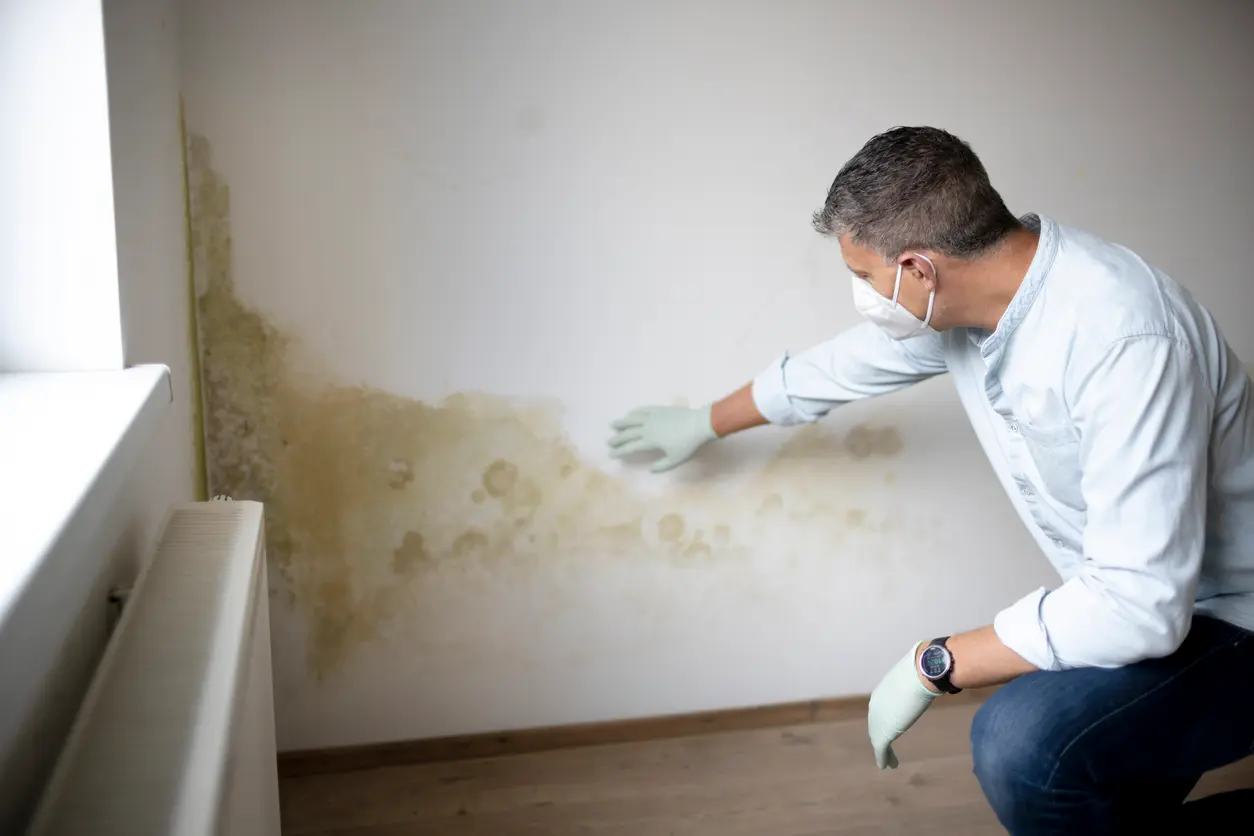
In Quebec, mold is only covered if it results from an insured loss, such as water damage caused by a burst pipe. However, if mold is due to lack of maintenance or a problem that worsens over time, you may not be covered.
Understanding Mold and Its Impact on Home Insurance
What Causes Mold in Your Home?
Mold develops within 48 hours in a humid environment. It can enter through poorly insulated windows or doors. Here are common causes:
- Water leaks in the house
- Floods or water damage
- High humidity levels in the air
- Water infiltration from outside
- Condensation on cold walls
To prevent moisture, ensure good ventilation in your home.
Why Is It Important to Act Quickly When Mold Appears?
Quick action with mold is crucial. You must eliminate the source of moisture within 24 to 48 hours following water damage. Prompt cleaning of affected areas limits the extent of damage.
We recommend contacting your insurer without delay. Quick action helps preserve your home insurance coverage. Know that repair costs increase over time if the problem isn’t addressed promptly.
Is Mold Covered by My Home Insurance Policy?
Coverage Circumstances to Consider
Here are situations where mold might be covered by your home insurance:
- Sudden water damage (like a burst pipe)
- Flooding due to appliance failure
- Roof leak caused by a storm
- Unexpected sewer backup
The problem’s origin must be a covered loss in your contract for the insurer to cover mold-related damages. Generally, your policy covers these cases if conditions are met.
Mold Exclusions in the Contract
Here are frequently excluded situations:
- Lack of building maintenance
- Slow and continuous water infiltration
- Excessive humidity due to poor ventilation
- Pre-existing mold when policy was purchased
Verify Policy Details to Avoid Surprises
We recommend carefully reading your contract clauses regarding mold. To ensure proper protection, take time to verify what’s covered. You can consult an insurance broker to understand your coverage limits.
What Measures Can Prevent Mold?
Maintain Stable Humidity Levels at Home
You should aim for 30% to 50% humidity in your house. Use dehumidifiers in more humid rooms like the basement.
Regularly ventilate by opening windows, especially after showers or cooking. Circulating air helps prevent moisture buildup on walls and interior wood. Don’t forget to close windows when it rains!
These simple measures will help prevent long-term mold problems.
Detect and Repair Leaks Before They Worsen
Frequently inspect your plumbing, roof, and walls. A small leak can quickly become major water damage if neglected. Check under sinks, around toilets, and near water-using appliances. Also look at your ceiling for suspicious stains.
If you find a leak, fix it immediately. This will prevent situations where water damages your furniture and house. Insurance doesn’t always cover damage caused by slowly accumulating water.
Protect Your Roof and Walls Against Water Infiltration
Your roof and exterior walls are the first line of defense against water. Ensure your roofing is in good condition. Clean gutters every fall and spring. Check seals around windows and doors. Apply waterproofing products as needed.
Prevent water from pooling near foundations by ensuring the ground around the house slopes away. These actions protect your home from infiltration and even flooding during heavy rains.
Maintain Your Ventilation and Heating Systems
A good ventilation system helps control humidity in your home. Clean or change filters regularly. Have ducts inspected to ensure nothing accumulates there. If you notice an earthy or musty smell, act quickly. It could indicate a system problem. Regular maintenance will help maintain healthy air in your home.
Implement Good Cleaning Practices to Prevent Spread
To clean mold, use water and soap. Avoid chlorine products which can be dangerous. If you see mold on porous items like carpet or wood, it’s better to replace them. In some cases, you might need to call experts, especially if the affected area is large or if you have health concerns. Don’t forget to fix the problem that caused the moisture. Otherwise, mold will return.
Compare Home Insurance Quotes Today!
Looking for reliable protection for your home? At Gendron Insurance, we offer tailored home insurance solutions for your peace of mind. Fill out our quick form to get a personalized quote and discover how our expertise can help protect your residence.
Frequently Asked Questions About Home Insurance and Mold
What Can Cause Mold in My Home?
It’s important to understand that mold is a fungus that develops quickly in damp places. It often appears due to water leaks, floods, or high humidity. You might notice signs like dark spots, musty odors, or surface discoloration.
Does My Insurance Cover All Moisture-Related Damage?
Your home insurance generally doesn’t cover mold unless it results from an insured loss, like a burst pipe. Damage caused by lack of maintenance is excluded. Mold is often considered progressive damage not covered by standard policies. We recommend checking specific mold exclusions in your insurance contract.
What Are the Best Practices for Maintaining Healthy Air?
We recommend maintaining humidity levels between 30% and 50% and ensuring good ventilation in your home. Quickly detect and repair any water leaks. Clean contaminated surfaces promptly. Remove porous materials affected by mold.
